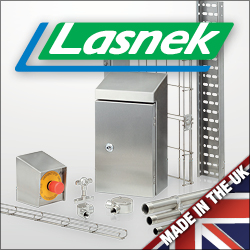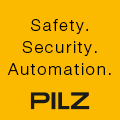
Posted to News on 24th Jun 2014, 13:55
Explaining the Physical Agents Directive EMF 2013/35/EU
Paul Laidler, Business Director for Machinery Safety at TUV SUD Product Service, explains what machine builders need to know about the Physical Agents Directive EMF 2013/35/EU.

On 26 June 2013 the Physical Agents Directive EMF 2013/35/EU was introduced, covering the minimum health and safety requirements regarding the exposure of workers to the risks arising from electromagnetic fields (EMF). It is one of a series of Physical Agents Directives addressing vibration, acoustic noise and optical radiation, all of which are concerned with workplace safety and the impact of workplace activities on the general public.
The European Commission does not specifically legislate for general public exposure because public health and safety remains the remit of individual Member States, hence it has only made a 'Recommendation 1999/519/EC'. However, electrical products and machinery marketed in the European Union have to meet relevant directives that include health and safety requirements which incorporate EMF safety, with CE Marking demonstrating compliance with relevant directives and harmonised product standards.
Physical Agents Directive (EMF)
The Physical Agents Directive (EMF) identifies the need for competent services or persons to undertake a workplace assessment. While the exact definition of a competent service or person is not currently regulated, the Health and Safety Executive (HSE) uses this definition: Someone who has sufficient training and experience or knowledge and other qualities that allow them to assist you properly. The level of competence required will depend on the complexity of the situation and the particular help you need.
For EMF, this means that suitable persons should be appointed with defined responsibilities for EMF safety, with their role summarised as follows:
- Receive relevant training on the EMF sources, measurement and calculation procedures.
- Have access to the current EMF Directive, guidance and standards.
- Liaise with the employer/operator to understand specific hazards for the site.
- Perform periodic risk assessments, calculation and measurement using appropriate test equipment.
- Produce reports and records for employer/operator.
- Ensure safety controls are identified and applied correctly.
- Consult with other workers.
- Provide training in safe operation/maintenance of EMF sources where necessary for workers/visitors.
- Assist with EMF exposure incident investigations, advise on medical examination.
Prior to legislation being introduced, a series of 'practical guides' to compliance will be issued by the European Commission, but these are unlikely to be available until approximately six months before the legislation must be adhered to. In the meantime compliance is required under the Management of the Health and Safety at Work Regulations, where a risk assessment of EMF hazards in the workplace can be made using the HSE general guide to risk assessment in five steps. These are:
- Identify the hazards
- Decide who might be harmed and how
- Evaluate the risks and decide on precautions
- Record your findings and implement them
- Review your assessment and update if necessary
European standard EN 50499
As a starting point to identifying EMF hazards, the standard EN 50499 Procedure for the assessment of the exposure of workers to electromagnetic fields (BS EN 50499 in the UK) describes an approach to identifying hazards by using an initial assessment that contains lists of equipment that are not an EMF hazard and those that might be.
Equipment is deemed to comply without further assessment if it is, for example, CE Marked electrical/electronic equipment that meets harmonised standards for EMF, or equipment that already meets general public exposure levels. Examples of equipment likely to require further assessment include electricity supply networks, industrial magnetisers/demagnetisers, electric welding equipment, and industrial microwave heating and drying equipment.
Where equipment is identified as producing an EMF hazard, a detailed assessment will be required to identify any safety controls, and it will be necessary to prepare safety operating procedures and procedures to be adopted in case of accidental or suspected overexposure, including a process for medical examinations.
The Physical Agents Directive (EMF) includes safety controls in its Article 5, Provisions Aimed at Avoiding or Reducing Risks. This includes controls such as zoning, barriers and signs, beam elevation, locking off access, selecting alternative equipment that emits less EMF, and restructuring the layout of the workplace.
Occupational-only controls include introducing alternative working methods to reduce exposure, the use of interlocks and shielding on equipment, limiting exposure by reducing the power or turning equipment off, and the use of personal protective equipment.
EN 50499 also uses a Zoning scheme to categorise the workplace:
- Zone 0 workplace is one in which the exposure levels are in accordance with general public exposure levels.
- Zone 1 workplace exposures may be greater than general public exposure levels but will be compliant with occupational exposure levels.
- Zone 2 workplace exposures may be greater than the occupational exposure levels. If access is required to Zone 2, then remedial measures to reduce exposure or to restrict or limit access should be taken. This may require special authorisation and temporary controls to reduce exposure (eg Permit to Work).
While European Union Member States have until 1 July 2016 to transpose the Physical Agents Directive (EMF) into national law and implement the legislation, it is clear that the assessment process can be complex and, once completed, may result in significant changes to the workplace environment. Organisations should therefore take action now to implement a process that will ensure that the equipment they use poses no risk and meets the new Physical Agents Directive (EMF).
Contact TUV SUD Product Service for further advice and guidance relating to the Physical Agents Directive EMF 2013/35/EU.


















